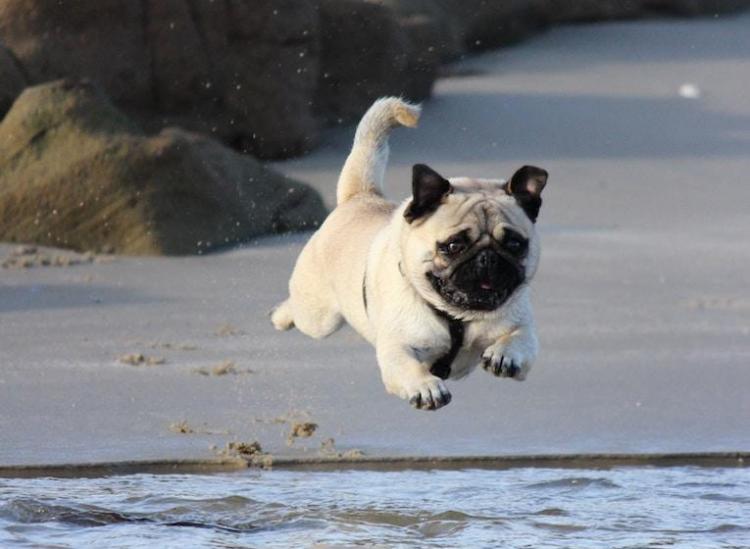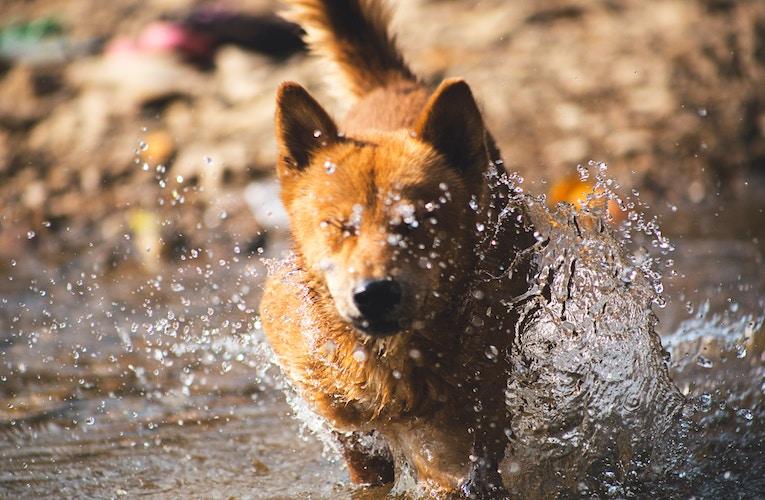How To Keep Your Dog Safe At The Beach

Unsplash/Bruce Galpin
It’s summer, which means you’re hitting the beach. If your furry friend is tagging along, there are some safety measures you need to keep in mind. Some dogs love the water, some hate it, but if your pup is going near a lake, river, pool or ocean, here’s what you need to know.
Swimming Safety
Many dogs are natural swimmers, but not all dogs are good swimmers. Contrary to popular belief, you do have to teach your pet how to swim. The doggie paddle can only get them so far. If your dog isn’t a water dog (such as golden retrievers, Labrador retrievers or poodles), take it slow in the shallows before encouraging your doggo to dive deep.
There are also breeds that struggle to keep their heads above water, such as French bulldogs and pugs. Their short little snouts make breathing difficult, and their bodies are so dense that they easily sink. Keep these pups in shallow water or safe on dry land.
Saltwater Poisoning

Unsplash/Peter Hershey
Although splashing around the ocean waves can be a blast, saltwater can be toxic to dogs. If your pup consumes too much salt water, it could lead to serious health risks (or even death). Symptoms include vomitting, shivering and shaking, veterinarian Dr. Jeff Werber told Inside Edition. If you see any of these signs after a day at the beach, bring your dog to your vet.
To prevent saltwater poisoning, take breaks from swimming to give your pet fresh water to drink, as well as time in the shade. Overall, it’s best to cap your ocean playtime at two hours max to make sure your doggie stays safe.
Dogs on Boats
Just like humans, pups need life jackets to safely sail. According to the American Kennel Club, it’s a good idea to have a life jacket for your pet any time you’re taking them into water where they can’t easily swim to shore or when there might be rough waves or strong currents. That means kayaking, paddleboarding or canoe trips all require life jackets for your pooch.
Pool Rules

Pexels
So you can’t make it to the beach; what a bummer. If you’re letting your dog swim in the pool, you need to check the swimming area for a few things.
First, look to make sure there are steps leading in and out of the pool. Dogs can’t climb ladders, and they need a usable exit when their legs get tired of swimming. Texas assistant veterinary professor Dr. James Barr told Modern Dog Magazine that the most dangerous pet situations occur when a dog can’t get out of a pool. Teach your pet how to get out of the water before letting Puppy swim.
Second, check the temperature of the water. Most dogs can’t handle extreme cold, so if it feels glacial, swim another day. Third, keep an eye on your pup to make sure he or she’s not lapping up pool water and rinse him off when he or she’s done splashing. That chlorine isn’t good for canine bodies.
P.S. When it’s not swimming time, keep a fence around the pool to make sure your little buddy only takes a dip when you’re there to supervise.
Want more dogs in your life? Sign up for Friday Fluff, a newsletter featuring the week’s cutest pups!











